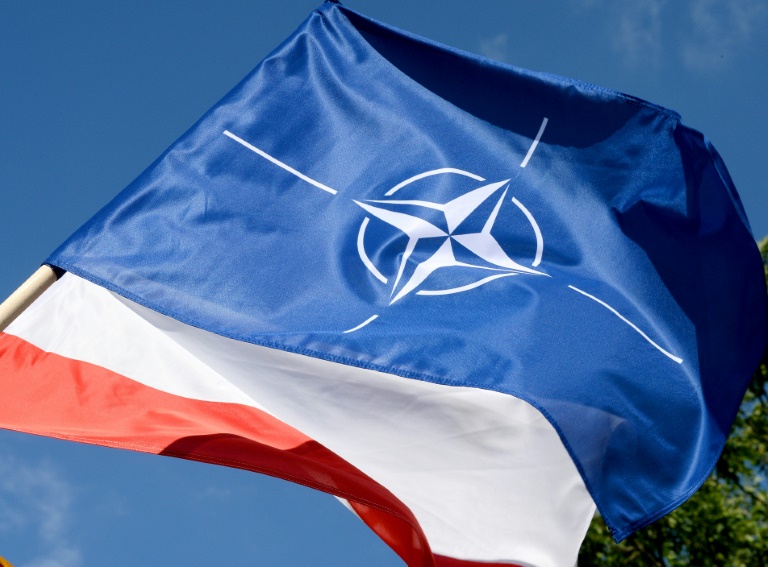World
Russian Drone Intrusions Challenge NATO’s Response in Poland

The recent incursion of Russian drones into Polish airspace has raised significant questions regarding NATO’s preparedness and resolve. This incident, characterized by multiple violations, occurred amid a wave of Russian missile strikes across Ukraine, with the western city of Lviv notably affected. Poland’s Prime Minister, Donald Tusk, reported that Polish airspace was breached on 19 occasions, leading to the interception of at least three drones by Polish and allied air forces.
The Russian Ministry of Defence denied allegations of targeting Poland, suggesting the incursions may have been accidental. Yet, Kaja Kallas, the EU’s foreign policy chief, indicated that the breaches appeared to be intentional, not accidental. In a related development, Belarus, an ally of Russia, reported it had also downed drones that had veered off course over its territory. This raises further questions about whether the incursions were a strategic test or simply a result of technical failure.
The drones used by Russia are relatively low-cost and susceptible to Ukrainian jamming efforts, which can disrupt their intended paths. Despite this, experts like Romain Le Quiniou from the Euro Creative think tank pointed out that there have been numerous prior instances of drone intrusions since 2022, affecting countries such as Poland, Romania, Lithuania, and Croatia. Reports from Defence Express highlighted that Polish and Lithuanian SIM cards, which can guide drones via local networks, were discovered in downed drones over Ukraine, indicating a level of planning and intent behind these operations.
The timing of these incursions coincides with upcoming military exercises by Vladimir Putin, scheduled to commence shortly near NATO borders, and follows recent pledges from European nations to implement security guarantees for Ukraine in the event of a ceasefire. Mick Ryan from the Lowy Institute characterized these violations as “probing,” suggesting they aim to assess NATO’s readiness to respond to potential conflicts, especially in light of discussions about establishing military bases in eastern Poland to bolster support for Ukraine.
The implications of these drone flights extend beyond mere airspace violations; they test NATO’s air defence capabilities and the collective resolve of its member states. Marko Mihkelson, chair of the Estonian parliament’s foreign affairs committee, noted that by entering Polish airspace with attack drones, Russia is not only challenging Poland but also the United States, which plays a pivotal role as NATO’s primary deterrent force.
US Senator Dick Durbin echoed these sentiments, labeling the incursions a “warning.” He asserted that they are a test of Western determination to protect Poland and the Baltic states. While some NATO diplomats believe these overflights do not signal the beginning of a larger conflict, they remain a clear indication of Russian intentions to probe NATO’s responses.
In response to the violations, NATO’s prompt actions demonstrate its capability and resolve to defend allied territory, as highlighted by the alliance’s top commander in Europe, General Alexus Grynkewich. Despite this, concerns linger regarding NATO and Europe’s capacity to withstand large-scale Russian assaults, particularly in light of the limited number of drones intercepted during these incidents.
The current NATO strategy faces criticism for its adaptability to modern warfare, particularly in drone technology. Ben Hodges, a retired US general, emphasized that employing advanced fighter jets against drones illustrates a gap in preparedness. Fabian Hoffman, a German researcher, warned that Europe’s approach, which relies on a defensive shield, is flawed given that Russia produces significantly more ballistic and cruise missiles than Europe can intercept.
The strategic and financial implications of these drone incursions cannot be overlooked. As Admiral Pierre Vandier pointed out, the disparity in cost-effectiveness between Western munitions and Russian drone operations poses a long-term sustainability challenge. “If we fire $1 million missiles at $10,000 targets, one day, we will lose,” he stated.
As the situation evolves, it is evident that NATO faces a critical juncture in addressing both the immediate challenges presented by Russian drone incursions and the broader implications for security in Europe. The readiness and strategic responses of NATO will be closely scrutinized in the weeks and months to come.
-

 Science2 months ago
Science2 months agoToyoake City Proposes Daily Two-Hour Smartphone Use Limit
-

 Health2 months ago
Health2 months agoB.C. Review Reveals Urgent Need for Rare-Disease Drug Reforms
-

 Top Stories2 months ago
Top Stories2 months agoPedestrian Fatally Injured in Esquimalt Collision on August 14
-

 Technology2 months ago
Technology2 months agoDark Adventure Game “Bye Sweet Carole” Set for October Release
-

 World2 months ago
World2 months agoJimmy Lai’s Defense Challenges Charges Under National Security Law
-

 Technology2 months ago
Technology2 months agoKonami Revives Iconic Metal Gear Solid Delta Ahead of Release
-

 Technology2 months ago
Technology2 months agoSnapmaker U1 Color 3D Printer Redefines Speed and Sustainability
-

 Technology2 months ago
Technology2 months agoAION Folding Knife: Redefining EDC Design with Premium Materials
-

 Technology2 months ago
Technology2 months agoSolve Today’s Wordle Challenge: Hints and Answer for August 19
-

 Business2 months ago
Business2 months agoGordon Murray Automotive Unveils S1 LM and Le Mans GTR at Monterey
-

 Lifestyle2 months ago
Lifestyle2 months agoVictoria’s Pop-Up Shop Shines Light on B.C.’s Wolf Cull
-

 Technology2 months ago
Technology2 months agoApple Expands Self-Service Repair Program to Canada









